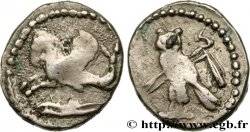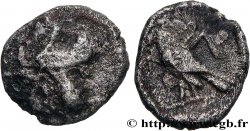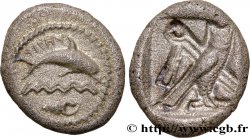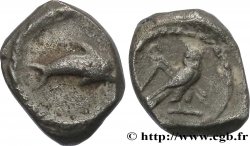bgr_343965 - PHOENICIA - TYRE Shekel
Not available.
Item sold on our e-shop (2018)
Price : 1 750.00 €
Item sold on our e-shop (2018)
Price : 1 750.00 €
Type : Shekel
Date: An 28
Mint name / Town : Tyr, Phénicie
Metal : silver
Diameter : 25 mm
Orientation dies : 3 h.
Weight : 13,56 g.
Rarity : R2
Coments on the condition:
Exemplaire sur un flan globulaire, ovale et irrégulier, bien centré des deux côtés avec le grènetis visible frappé avec un très bon métal. Très joli droit, de style fin à l’usure régulière. Le revers est bien venu. Belle patine de collection ancienne avec des reflets dorés
Catalogue references :
Obverse
Obverse legend : ANÉPIGRAPHE.
Obverse description : Dauphin sautant des flots au-dessus des vagues, représentées par des zizag ; à l’exergue, un murex tourné à droite ; grènetis circulaire.
Reverse
Reverse description : Chouette debout à droite, la tête de face, tenant transversalement un sceptre et un fléau égyptien ; le tout dans les restes d’un carré creux qui suit les contours de l’animal.
Commentary
Type anépigraphe. Précédemment, ce type était présenté comme un double shekel, mais il s’agit bien en fait d’un shekel, correspondant à deux sicles. Malgré la rareté du type, nous n’avons pas relevé d’identité de coin pertinente. Semble néanmoins plus rare que ne le laissent supposer les ouvrages généraux. Rare en très bel état de conservation. Pour ce type les auteurs de l’ouvrage sur Tyr, J. Elayi et A. G. Elayi ont recensé 152 exemplaires.








 Report a mistake
Report a mistake Print the page
Print the page Share my selection
Share my selection Ask a question
Ask a question Consign / sell
Consign / sell
 Full data
Full data



